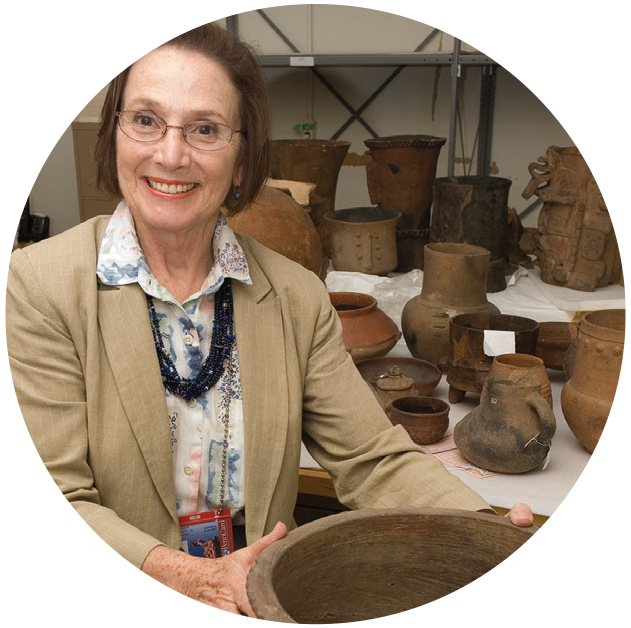—To the memory of my hero, my co-conspirator, and my very good friend.
ELIN DANIEN was more than a force of nature. She was a dancer, an actress, a writer, a scholar, a traveler, an expert on chocolate, an engaging lecturer, and a beautiful woman who was curious about everything. She was devoted to her husband Bud and their dogs and was a friend and mentor to many.

I always thought of Elin as a Mayanist, but I just finished a book she edited in 1990 for the Penn Museum— The World of Philip and Alexander, A Symposium on Greek Life and Times. Elin was responsible for many symposia, workshops, lectures, and books on a variety of subjects in her role as Coordinator of Museum Events. After volunteering and working part-time at the Museum for ten years, she went to the then-director of the Museum, Bob Dyson, in 1981 and told him we needed more public programs. He immediately agreed and gave her the job. That was the way Elin did things. She saw a need and filled it. She created Museum programs that exist to this day, including Member Nights and World Culture Days. She started the Museum rentals program, and, one spring, even helped landscape one of the courtyards. For many years after her official role at the Museum ended, she served as a volunteer docent and a Research Associate
in the American Section. In 1986, she founded Bread Upon the Waters, a scholarship program that has provided more than 123 women over the age of 30 with the opportunity to earn their undergraduate degrees at Penn.
Elin became interested in pre-Columbian culture after she hitchhiked to Mexico from her home in New York for a summer vacation and ended up staying two years. She continued to travel to Mexico and Guatemala after she returned to New York to work as an advertising copywriter. In the early 1970s, when she moved to Philadelphia, she discovered the letters of Robert James Burkitt in the Penn Museum Archives and became captivated with this eccentric man, who lived in Guatemala excavating and acquiring objects for the Museum in the early 20th century. In 1979, 34 years after Burkitt’s death, Elin flew with her husband to Guatemala, then traveled seven hours on bumpy, dirt roads to reach a finca or ranch in Cobán, where she found two crates in a barn with “Burkitt” stenciled on them. The crates contained Burkitt’s notes from 1903 to 1913, which she brought back to the Museum with permission from his family.
Her fascination with Robert Burkitt led to a Penn Ph.D. dissertation on pre-Columbian polychrome vessels excavated by Burkitt, more than seven articles for Expedition magazine and other publications, and an event called Maya Weekend, which brought together professionals and amateurs for three days of lectures, workshops, and fellowship (tequila was served). She ran Maya Weekend for 25 years. In 2009, she developed the Museum exhibition Painted Metaphors: Pottery and Politics of the Ancient Maya; she edited a special issue of Expedition dedicated to this subject. Elin also researched and wrote about others associated with the Penn Museum, including illustrator Mary Louise Baker and Egyptologist and Museum pioneer Sara Yorke Stevenson.
All of us at the Museum who knew Elin will never forget her. She made our lives richer. She could always make me laugh. I end with something I heard Elin say many times:
“Archaeology is the most fun you can have with your pants on.”
